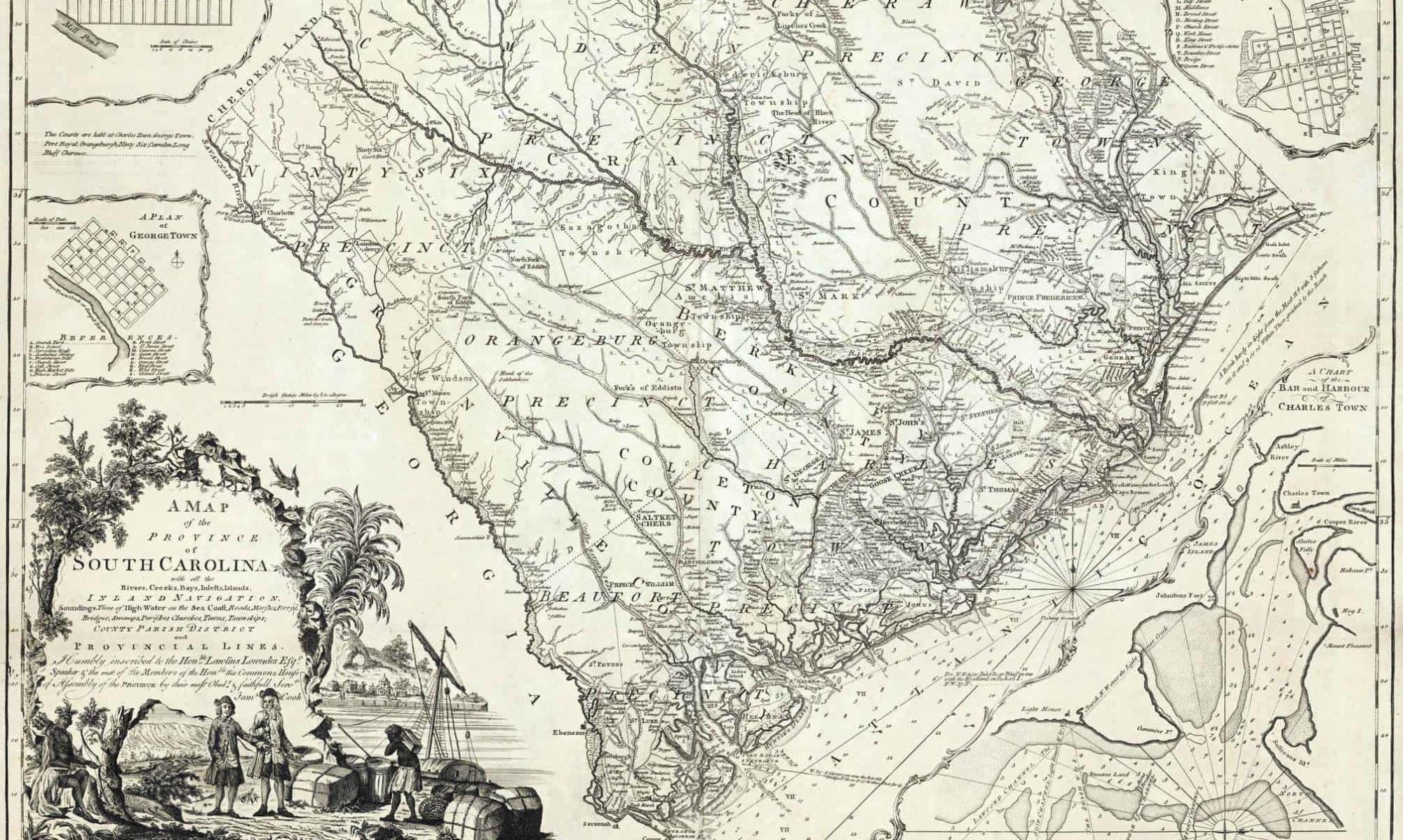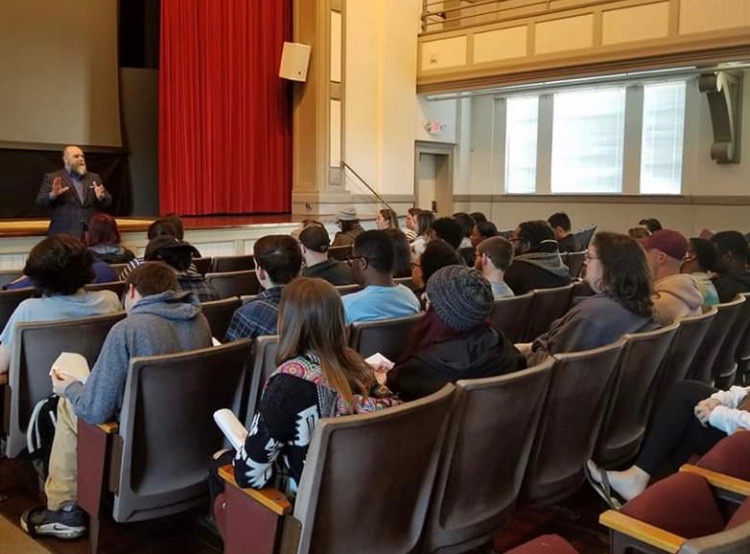
Coastal Carolina University students created this exhibit from conception to completion with the help of their professors, community stakeholders, and a variety of university and community members. The project began as collaborationbetween Professor Carolyn Dillian, Chairof Anthropology and Geography, and Assistant Professor Katie Clary from the Department of History. Their classes, Cultural Resource Management and Museums and Communities, worked together to create this exhibit.
Telling A Story Through Artifacts
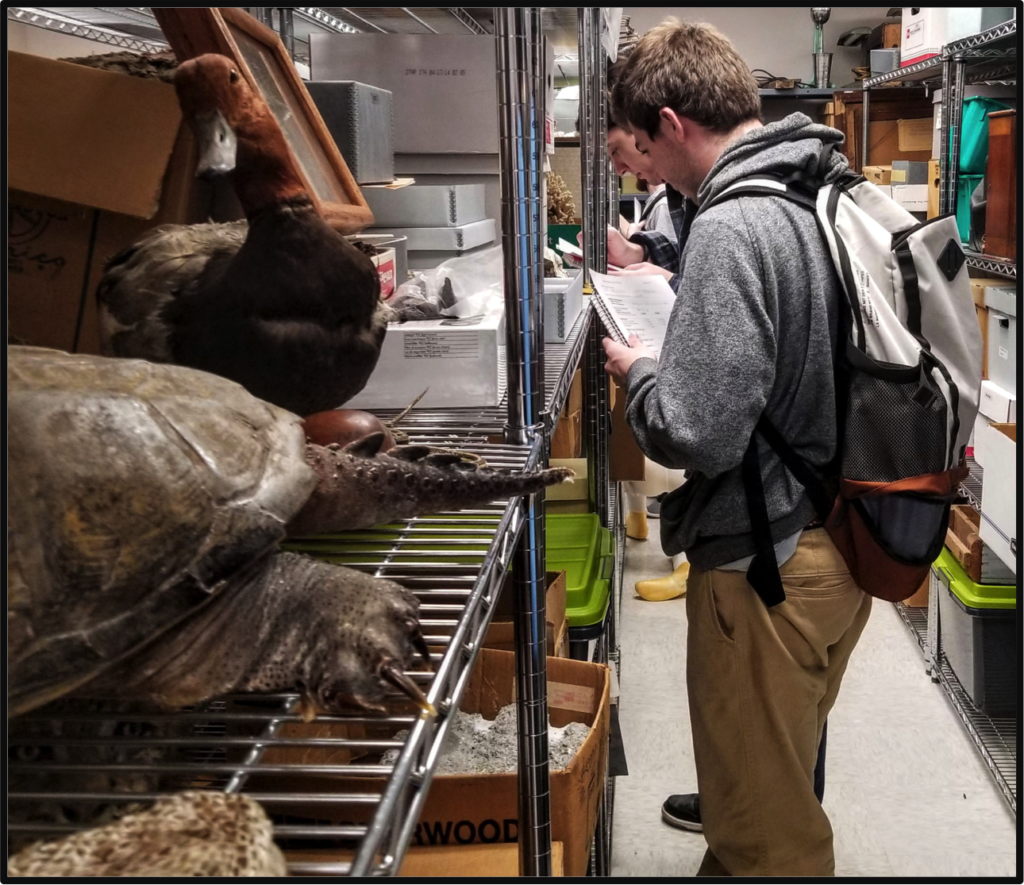
The first step of creating the exhibit was artifact selection. Students visited the Horry County Museum to select an artifact that they thought would tell the story of the history or pre-history of Horry County and meet size limitations for printing and scanning, but they also had to consider the way an artifact would look and feel once it was recreated.
Using New Technologies

Students next 3D scanned their artifacts using a NextEngine3D scanner to create a digital replica of their chosen artifact. They learned shiny or flat objects do not yield a quality scan. Once the artifacts were scanned, students then processed the files to ready them for 3D printing.
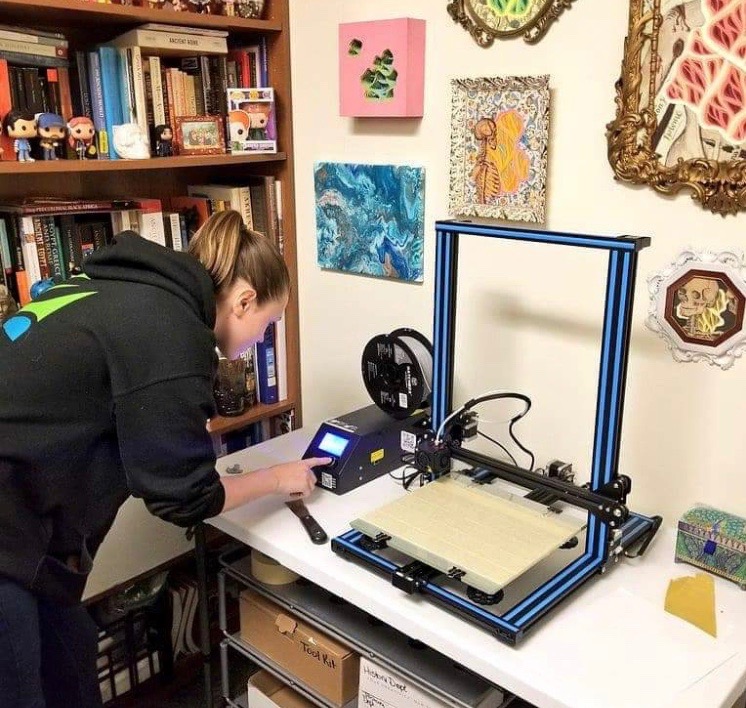
Then, students used software to manipulate the 3D files and determine the best way to print the artifacts. Next, students 3D printed the artifacts on a Creality3D printer. The printer uses a plastic filament that is heated and then distributed in layers to build up the plastic recreation of the artifact.
Building an Exhibit
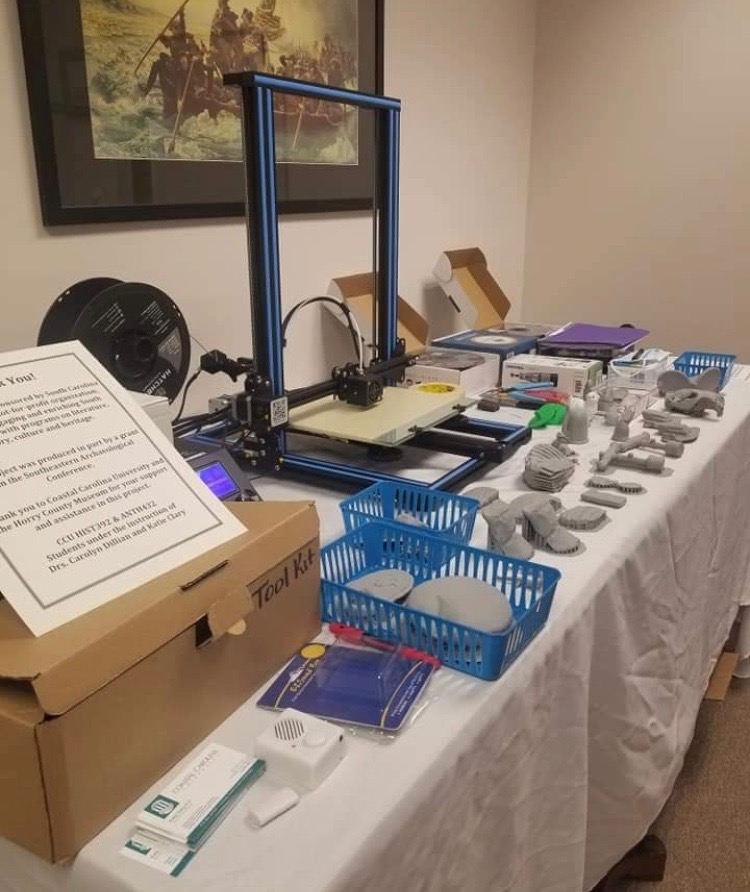
Once the artifacts were chosen, students had to determine the best way to present these artifacts to our audiences. They wrote interpretive text to tell the story of the artifact and its historical context, chose photographs and images to further contextualize the images, and designed the layout and order of artifacts. Students processed their artifacts after they were 3D printed to sand off rough edges and remove printed support structures. Students also worked with the Horry County Museum to fabricate the exhibit furniture and to install the exhibit.
Providing an Accessible Exhibit for All
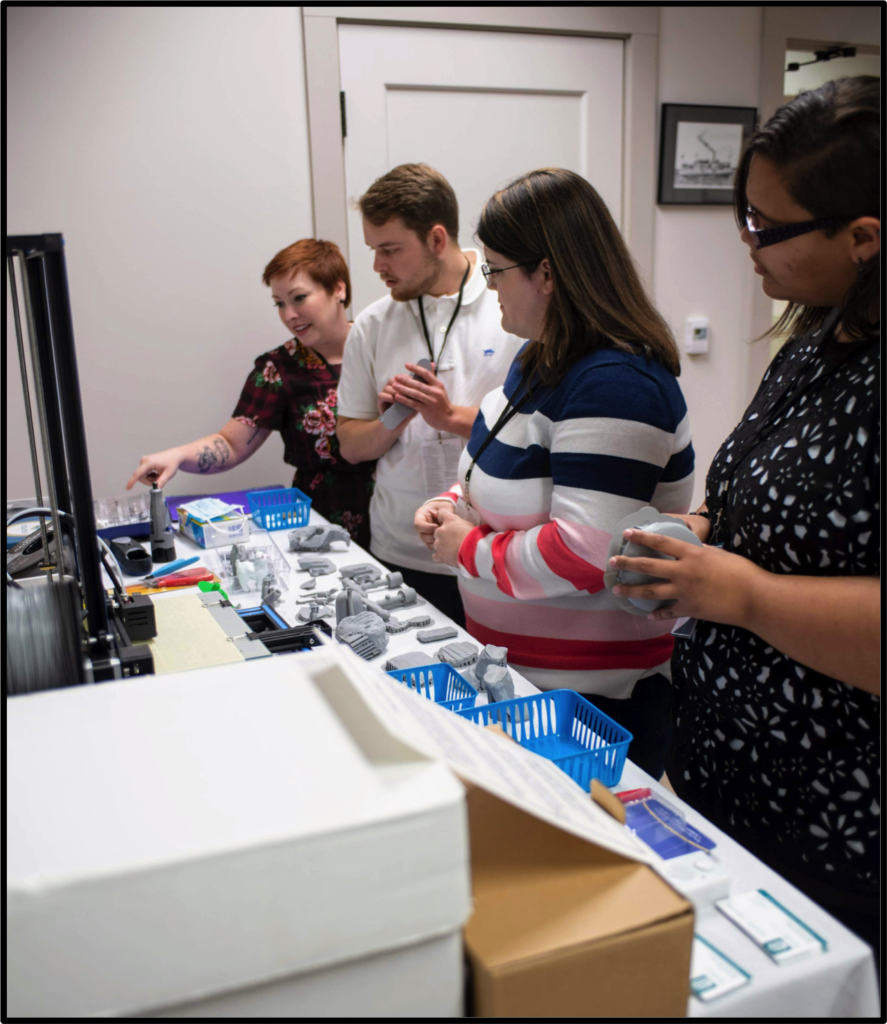
This exhibit includes automatic audio buttons and digital audio QR codes for people to listen to the interpretive text and braille printed materials and large print for people with visual impairments. The font used throughout this exhibit is “Dyslexie,” which is a font specifically designed for people with dyslexia and other reading difficulties. We have provided noise-cancelling headphones for people with sensory processing difficulties. Additionally, our exhibit is available in digital form online at: www.PrintingThePastSCin3D.com.
Working with Communities
Throughout this process, students worked with and learned from our community members and stakeholders including descendant communities, SOS Health Care Inc., the South Carolina Commission for the Blind, and others.

The students and their professors would like to thank the Department of Anthropology and Geography and the Department of History, Michael Digiorgio, Abby Sink, Judy Johns, Chief Harold Hatcher, Sarah Pope, the Horry County Museum, Coastal Carolina University, the South Eastern Archaeological Conference, and the South Carolina Humanities Commission for their assistance on this project.
Thank You for Visiting!
We hope that you enjoy this exhibit. Please touch and explore these 3D printed artifacts as you learn about the history and prehistory of Horry County and explore our past!
